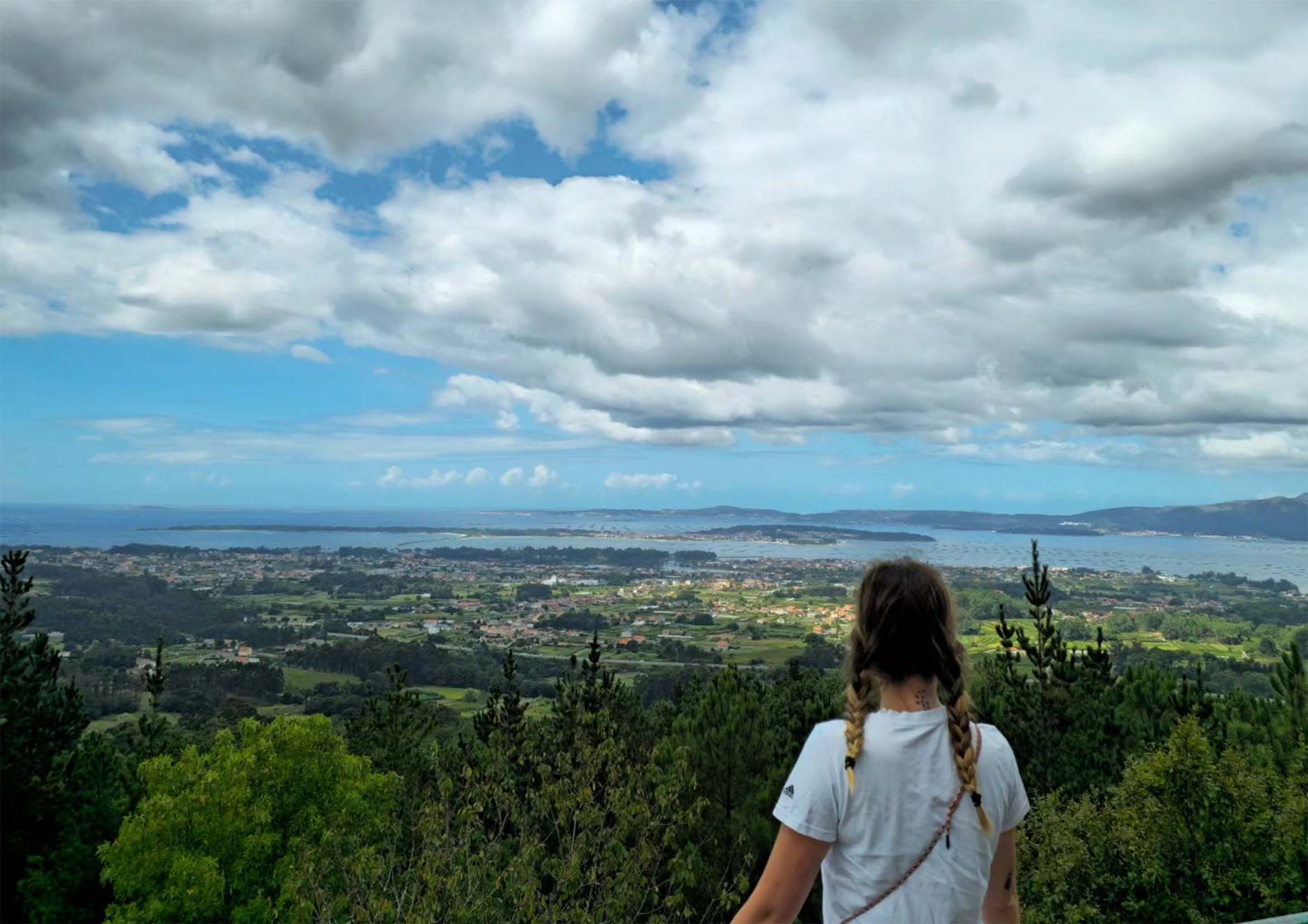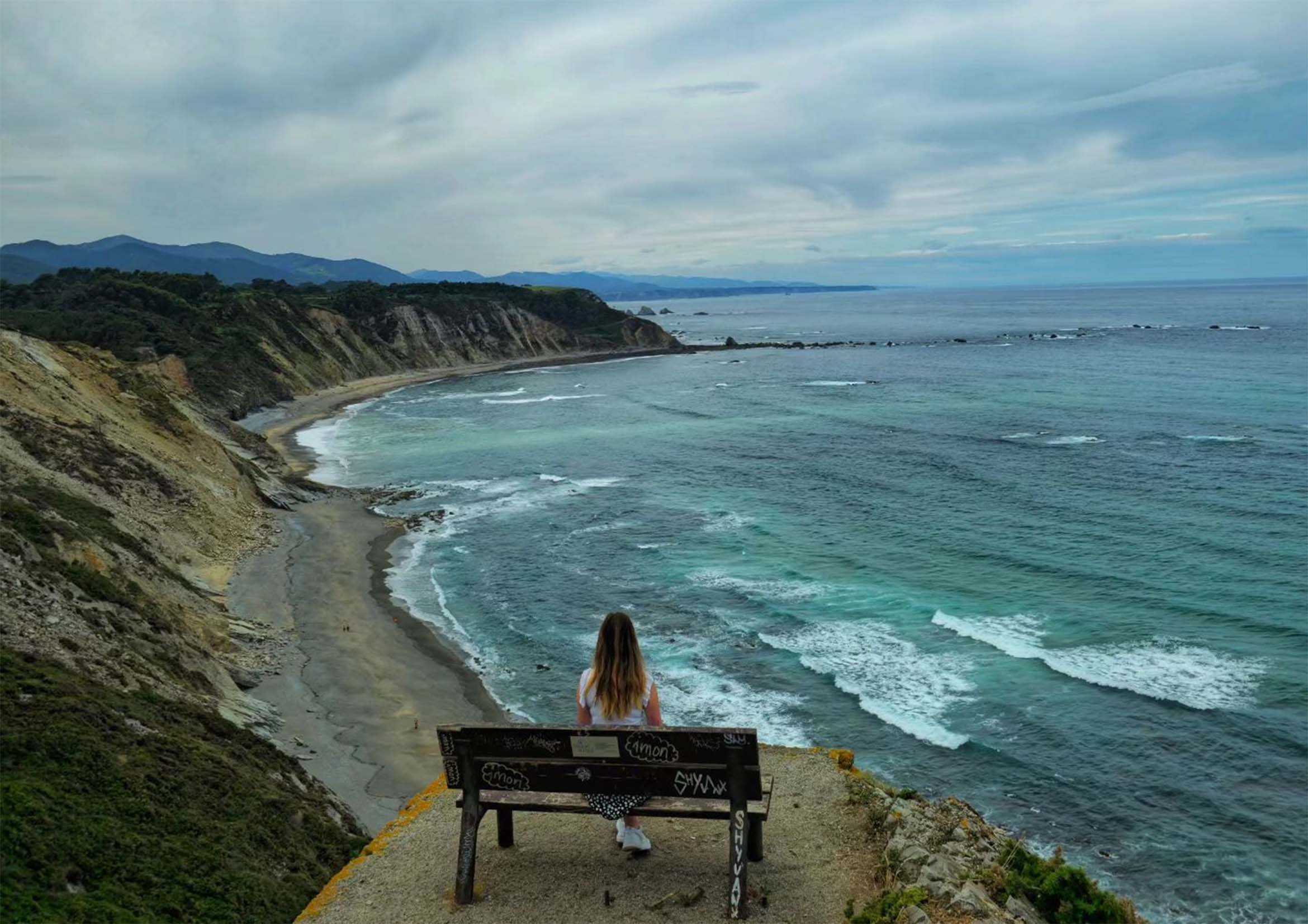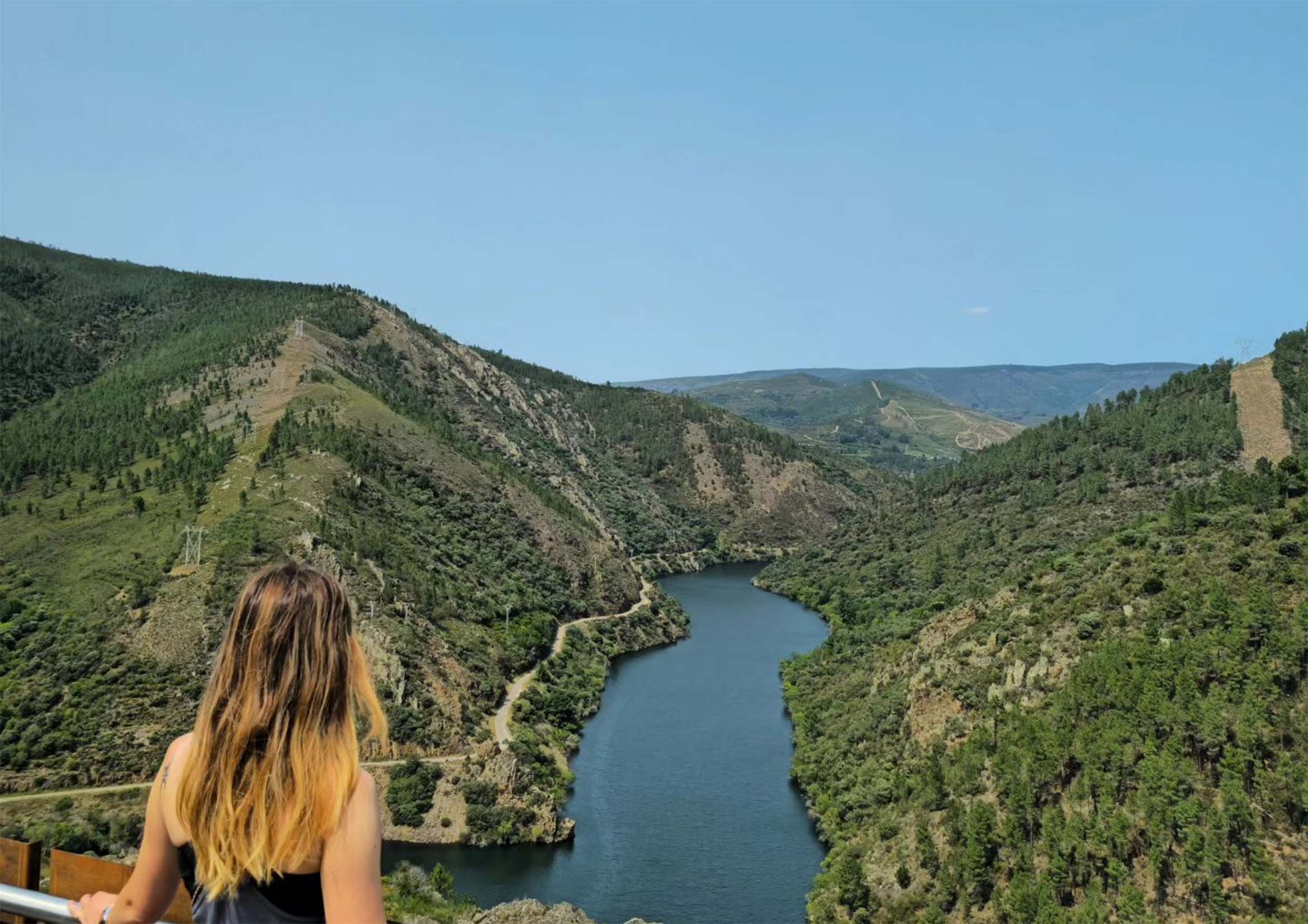Embarking on a journey to Mirador de Lobeira in the picturesque town of Vilanova de Arousa felt like stepping into a realm where time and nature collaborated to create an enchanting narrative. My recent sojourn to this remarkable viewpoint unfolded as an odyssey, blending history, art, and nature in a symphony of experiences that surpassed the mundane and etched vivid memories into the tapestry of my adventures.
A Glimpse into History: Unveiling the Layers of Time
Mirador de Lobeira isn’t just a perch with a view; it’s a living canvas that preserves the imprints of bygone eras. The whispers of an ancient castrexo settlement and the sturdy remnants of a military fortress create an ambiance of historical significance. Standing on this sacred ground, I felt a unique connection to the generations that once called this place home, the guardians of the land whose stories are woven into the very stones beneath my feet.
The castrexo settlement, with its strategic location, hinted at the lives of a community that navigated the challenges of their time. As I explored the remnants, I couldn’t help but marvel at the resilience of those who carved their existence into the rugged terrain. The military fortress, a sentinel overlooking the vastness of the Ría de Arousa, whispered tales of a different era, invoking a profound sense of reverence for the rich history embedded in the landscape.
Walking through the remnants of these ancient civilizations, I felt like a time traveler, bridging the gap between the past and the present. The stones, weathered by centuries of wind and sea spray, seemed to hold secrets, and the echoes of the past reverberated through the air. It wasn’t just a historical site; it was a living testament to the endurance of human spirit against the passage of time.
360° Panoramic Extravaganza: Nature’s Grandeur Unveiled

The defining allure of Mirador de Lobeira is undoubtedly the unrivaled views that stretch across the horizon. Perched at a lofty elevation of 290 meters, the mirador offers a sweeping 360° panorama that unfolds a visual feast of extraordinary proportions. From the islands of Ons to the isthmus of O Grove, the southern reaches of the Barbanza Peninsula to the towns of Cambados and Vilagarcía de Arousa, each element contributes to a mesmerizing tapestry.
As I ascended to the viewpoint, the anticipation grew with every step. It wasn’t just about reaching a higher vantage point; it was about unveiling a canvas that nature had painted with unparalleled artistry. The dynamic interplay of land and sea creates a symphony of colors and textures that captivates the soul. Illa de Arousa, Monte Xiabre, and the valley of Umia add layers to this visual masterpiece, making every gaze in a different direction an exploration into a new chapter of Galicia’s coastal poetry.
At the summit, I was met with a sensory overload. The salty breeze carried whispers of tales untold, and the sound of waves crashing against the rocks far below provided a bassline to nature’s symphony. The immensity of the Ría de Arousa stretching out before me was both humbling and invigorating. It was a reminder of the sheer grandeur that the natural world could conjure, a panorama that stirred a profound sense of awe.
The mirador transforms into a living canvas where nature paints and repaints its masterpieces with the shifting hues of the sky and sea. The play of sunlight on the water, casting reflections that seemed to dance, created a dynamic display that held me captive. It wasn’t just a scenic view; it was a visual journey through the diverse landscapes that Galicia proudly displays.
A Monument of Remembrance: Bridging Time and Tragedy
Nestled within this panoramic spectacle stands a solemn cross, a monument dedicated to the victims of the sea. This poignant reminder of the unpredictability of the Atlantic Ocean adds a layer of contemplation to the panoramic expanse. The silent testimonial to lives lost at sea becomes a bridge between the historical significance of Mirador de Lobeira and the enduring connection of the Galician people with the maritime elements that shape their identity.
As I approached the cross, the atmosphere shifted. It wasn’t just a symbol; it was a silent plea for remembrance, a marker in the vastness of the sea that spoke of both the beauty and the perils it held. The plaque beside it, paying homage to the sailors of the ill-fated ‘Serpent,’ added a personal touch to the experience. It was a reminder that, despite the breathtaking beauty that surrounded me, the sea had witnessed tragedies that humbled even the most intrepid seafarers.
Adjacent to the cross, a plaque pays homage to the sailors of the ill-fated ‘Serpent.’ This maritime tragedy becomes a poignant chapter in the narrative of Mirador de Lobeira, highlighting the symbiotic yet tumultuous relationship between the Galicians and the vast Atlantic that borders their existence.
As I stood there, taking in the vista and reflecting on the stories etched in that memorial, I felt a profound sense of gratitude for the lives that had sailed these waters and a heightened awareness of the sea’s dual nature—both a source of sustenance and a realm of unpredictability.
Faro das Lúas: Where Art and Nature Converge
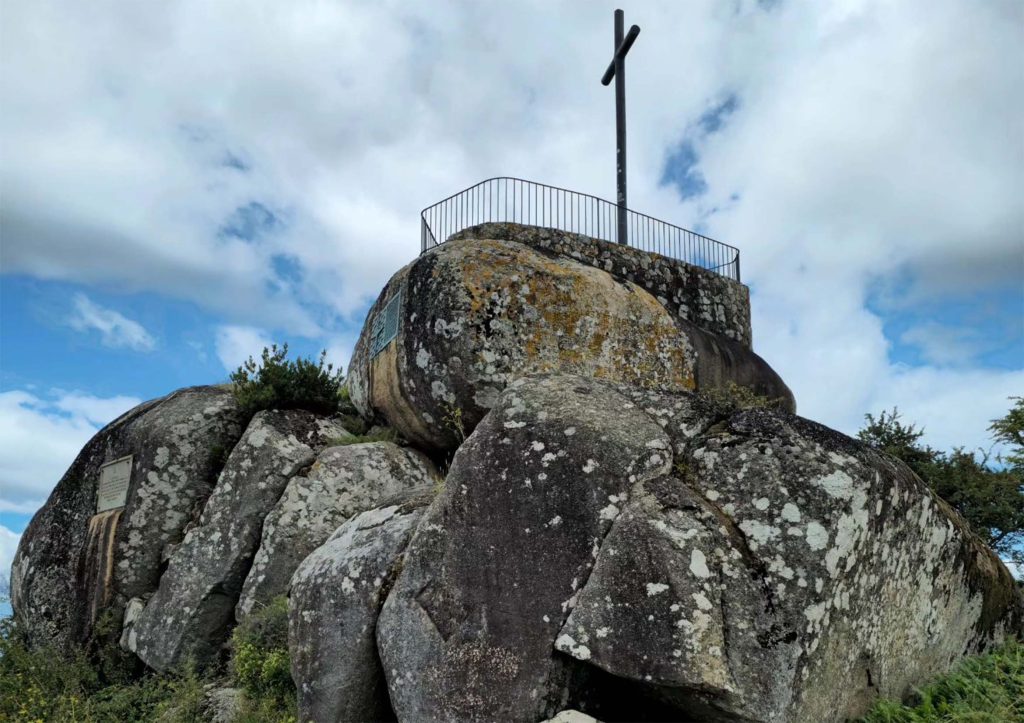
A short distance away, the artistic masterpiece known as Faro das Lúas emerges as a complementary gem in the landscape. Crafted by the skilled hands of sculptor Manolo Chazo in 2002, this sculpture represents three moons in various phases. The artist’s meticulous design allows the interplay of sunlight to cast enchanting reflections visible from different points across the region.
As I approached Faro das Lúas, the sculptural brilliance unfolded like a poetic revelation. The three moons, strategically positioned to capture the sunlight, created a spectacle that felt almost otherworldly. The play of shadows and light was a dance that seemed to transcend the materiality of the sculpture, merging seamlessly with the natural elements surrounding it.
Faro das Lúas becomes not just an aesthetic addition but a harmonious convergence of art and nature. The sculpture’s phases, mirroring the lunar cycle, create a dynamic dialogue with the natural elements, transforming the landscape into an ethereal experience. The alignment of the moons and the interplay of light showcase the artist’s ingenuity in harmonizing human creation with the cosmic rhythms.
Ruta dos Miradoiros: A Journey Connecting Miradors
Mirador de Lobeira and Faro das Lúas are not isolated experiences; they are part of the broader narrative woven by the Ruta dos Miradoiros (Route of Viewpoints). The PR-G 126 trail, known as the ‘Ruta dos miradoiros Lobeira-Faro das Lúas,’ spans approximately 4.5 kilometers linearly, connecting these two miradors in a seamless exploration of Galicia’s coastal treasures.
This trail, more than a physical journey, is a thematic bridge between different facets of the Galician landscape. It offers a rhythmic walk through nature, history, and artistic expression, encapsulating the essence of what makes this region a treasure trove for adventurers and contemplatives alike.
The Ruta dos Miradoiros isn’t just a walk; it’s a pilgrimage through the soul of Galicia, where every step unearths a new layer of its multifaceted identity. The trail, well-defined and accessible, caters to all levels of hikers, ensuring that the panoramic bliss of Mirador de Lobeira and the artistic enchantment of Faro das Lúas are accessible to every traveler willing to traverse its course.
Preserving the Magic: A Call for Responsible Tourism
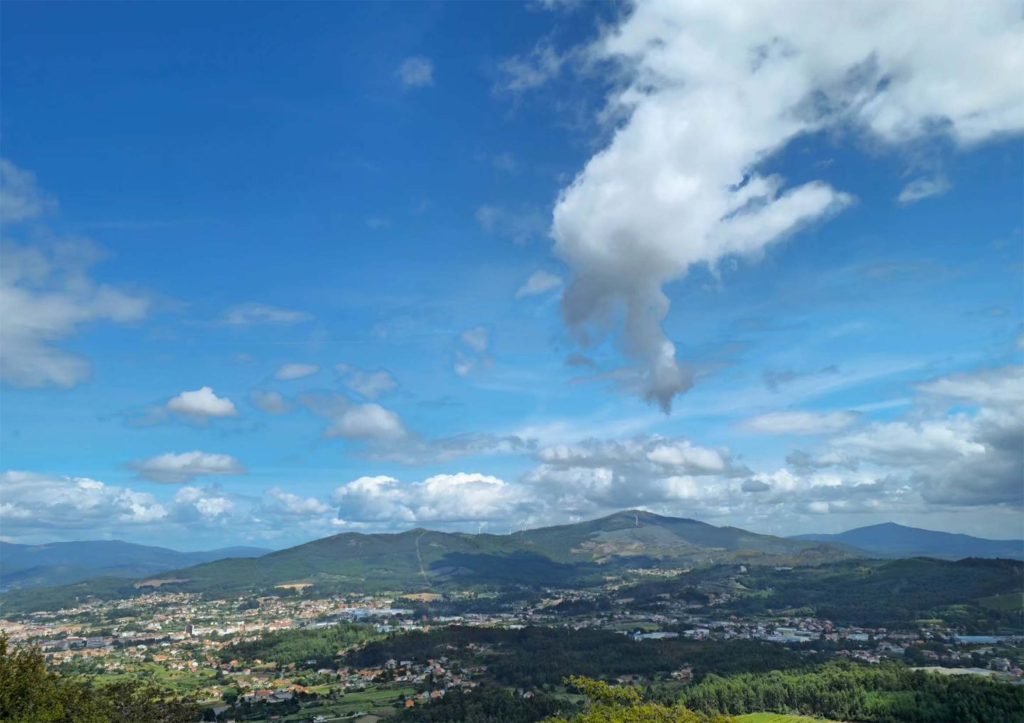
I deeply immersed in the beauty of Mirador de Lobeira and its adjoining wonders, the responsibility to preserve this natural and cultural heritage weighed on my conscience. These treasures, a testament to Galicia’s rich tapestry, deserve not just admiration but a commitment to sustainable and responsible tourism.
The local authorities, recognizing the fragility of these landscapes, have implemented measures to restrict access to certain areas, particularly the Cova das Choias. This careful management ensures that the delicate ecosystems and historical sites remain unharmed for future generations of adventurers and nature enthusiasts.
The preservation of Mirador de Lobeira goes beyond individual actions; it requires a collective commitment to respecting the environment and embracing the cultural narratives woven into the landscape. As travelers, we become custodians of these treasures, with the privilege to witness their beauty also carrying the responsibility to leave minimal footprints.
A Chapter in Galicia’s Story
Mirador de Lobeira, with its historical resonance, panoramic grandeur, and artistic allure, etched a profound chapter in my journey through Galicia. The interplay of history, nature, and art on this elevated perch created an immersive experience that transcended the boundaries of a typical tourist attraction.
As I descended from the heights of Mirador de Lobeira, the memories lingered like a sweet aftertaste. The layers of history, the vastness of the Ría de Arousa, the somber cross paying homage to the sea’s victims, and the artistic brilliance of Faro das Lúas became not just waypoints but waypoints in a personal exploration of Galicia’s soul.
Mirador de Lobeira, perched at the crossroads of time and nature, exemplifies the essence of elevated bliss. It’s more than a viewpoint; it’s a portal where the past converses with the present, where nature unfolds its myriad facets, and where art becomes an integral part of the landscape. It’s a treasure trove that invites the intrepid traveler to explore, reflect, and become part of the ongoing story that is Galicia.
